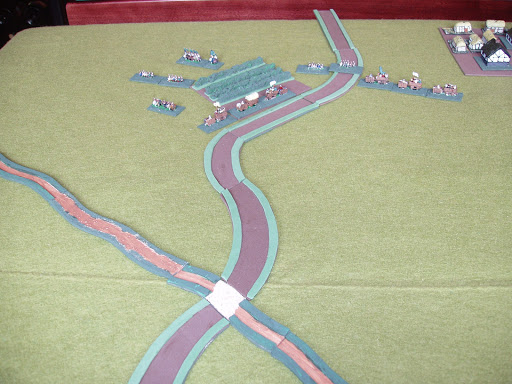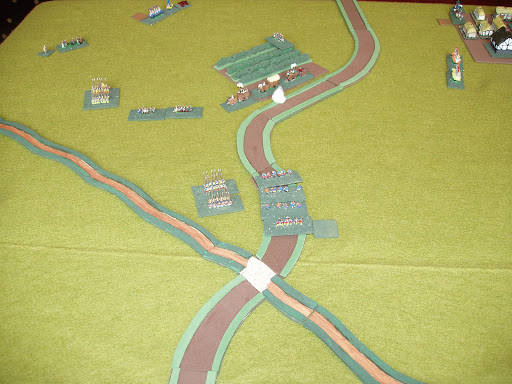One of the things I have banged on about on this blog over the years is the military revolution in early modern Europe. As my loyal reader will recall, this was first suggested in the 1950s by Michael Roberts, and extended in the 1980s by Geoffrey Parker and has generally stimulated a fair bit of historiography around the ideas of state formation, taxation and the increase in size in armed forces, particularly (although not exclusively) armies and fortifications.
The consequences have been perhaps, a great deal more heat than light, at least as far as the humble wargamer might go. How much the wargamer is interested in the details of state formation and military finance depends on the sort of person, at least so far as history goes, that one is. Most wargamers are not that interested in the financing of the Spanish army in the Low Countries in the 1580s, it seems to me. They are interested in the battle the army fought.
As I mentioned, however, one book leads to another. My readings on ‘waste’ in the Domesday Book have led me to:
Ayton, A., Price, J. L., eds. The Medieval Military Revolution: State, Society and Military Change in Medieval and Early Modern Europe (London: I. B. Taurus, 1998).
This is, of course, a book of essays on various aspects of the military in the period from around 1066 to the Seventeenth Century. I say around 1066 because the first essay is about whether the historian can trace the movements of William the Conqueror's army after Hastings by references to waste in the Domesday Book for the relevant counties. As I intend to return to this topic at a later date, I will leave the interested reader waiting for the answer to that one.
Having bought the thing (the university library is inaccessible, at present) I did what most red-blooded historical wargamers would do with a book, and read the essay I was interested in, and then the rest of them. And jolly interesting most of them were too.
To take the least wargaming relevant ones first, there are two essays on the just war in early modern Europe, one on the views of Erasmus of Rotterdam and the other on a Paris theologian Josse Clichtove. I had not heard of him either. Erasmus was a virtual pacifist, Clichtove was not. But the authors are at pains to observe that neither came to their views in a vacuum – the church had views on war and its conduct from the tenth century at the latest.
Other items of interest (the Estimable Mrs P observed when I was talking about the latest History Today issue ‘You say that all of the articles are interesting.’ Guilty as charged, I am afraid) include town defences after the Norman conquest, the gifting of land to the Templars (including two and a half carucates in the village in which I dwell – I shall have to look into that now as well) disputes about heraldry and what it tells us about the motivations to fight in the fourteenth century, the experience of Sir William Pelham, the Elizabethan engineer partially responsible for the defences of Berwick upon Tweed and the Dutch Republic and warfare.
Again, I shall come back to some of these topics, I suspect. But the overall question is tackled in the introduction by the editors: was there a medieval military revolution? As with any good undergraduate essay on the topic, the answer lies along the lines of attacking the question, rather than answering it.
There is no doubt that warfare changed between, say 1000 AD and 1500 AD. How much it changed is a bit of a moot point, of course. Various revolutions in military affairs have been found, including the rise of cavalry, the fall of cavalry and the resurgence of infantry. Further, there is the development of the castle and other fortifications and, of course, siege engines and techniques. Slightly surprisingly to me the authors do not cite Clifford Roger’s article on infantry revolutions in the Hundred Years War which dates from 1993, but I suppose there is only so much you can put in.
The most relevant of the factors which are said to introduce the early modern military revolution is the introduction of gunpowder. This, however, dates for the mid-fourteenth century, not the sixteenth. The cannon was used effectively by the French to blast the English out of Normandy and Gascony by the 1450s as the Ottomans were taking Constantinople. Harfleur, which Henry V had to starve out over months in spite of having cannon, lasted a couple of weeks when the French returned in the 1440s. Warfare, at least in terms of positional and territorial control, had changed.
Perhaps the most interesting part of a medieval revolution is the balance between defence and offence in siege warfare. The balance did shift between 1450 and 1530 and so that was a time of more field battles as important positions needed to be besieged (with some hope of rapid success) and relieved, thus forcing actions upon the commanders. After 1530 the pace of campaigning slowed again as the new fortifications came into effect, and battles became rarer.
The upshot is that the editors do not answer their own question (of course) but do observe that there were radical changes in warfare in the medieval period. That extension, of course, calls into question the whole idea of there being a revolution in military affairs at all. If we extend the period of change from, say, the early fourteenth century to the end of the eighteenth century, we hardly have a ‘revolution’ at all, more an evolution. The problem seems to be both the definition of a military revolution and the time frame which we impose on our history. There are continuities and disjunctions all along the line, and the changes which really did take place are part, perhaps of both. We have to have our cake and eat it, it seems to me here, no matter how indigestible it might seem.









